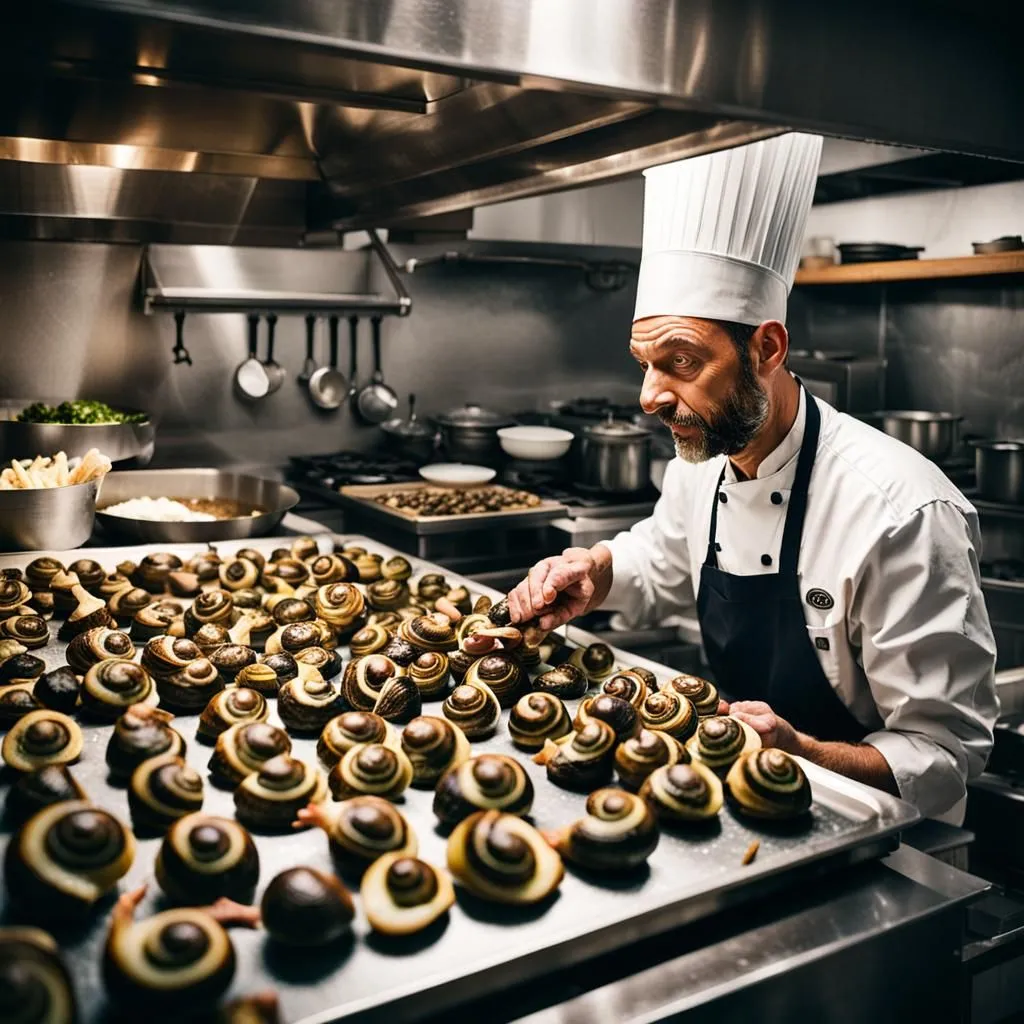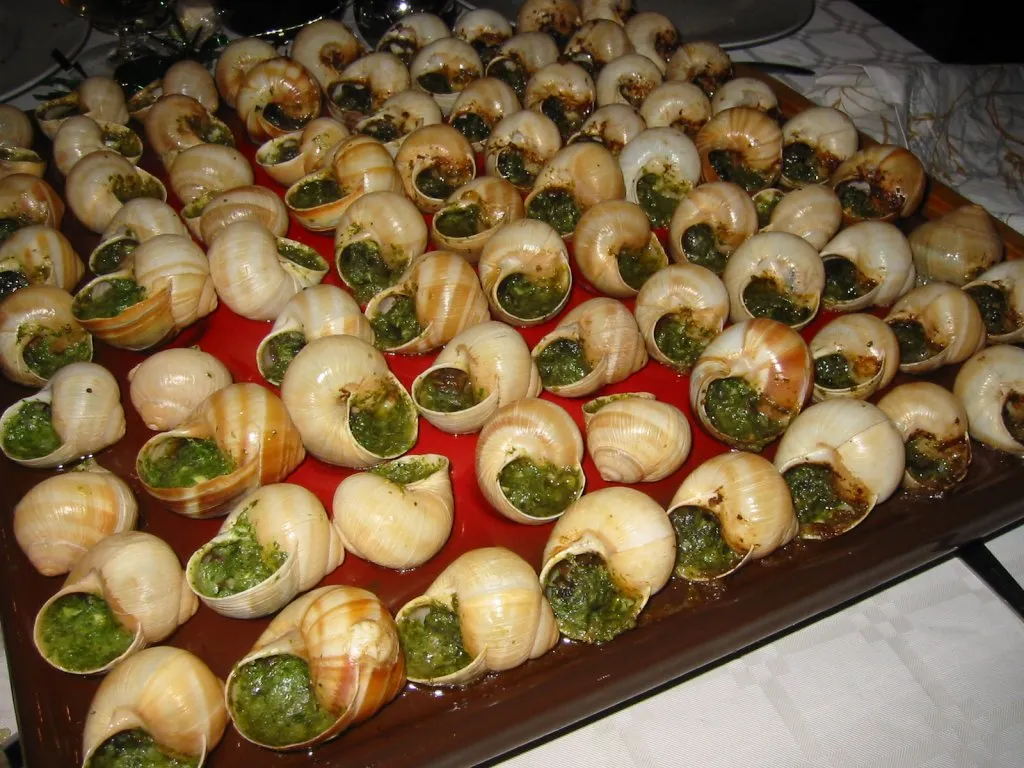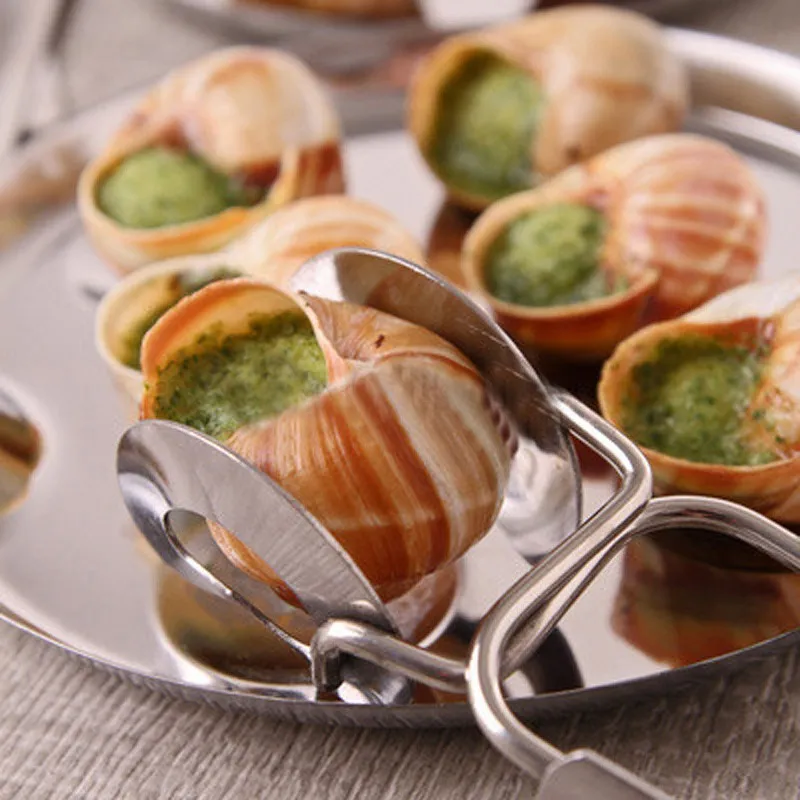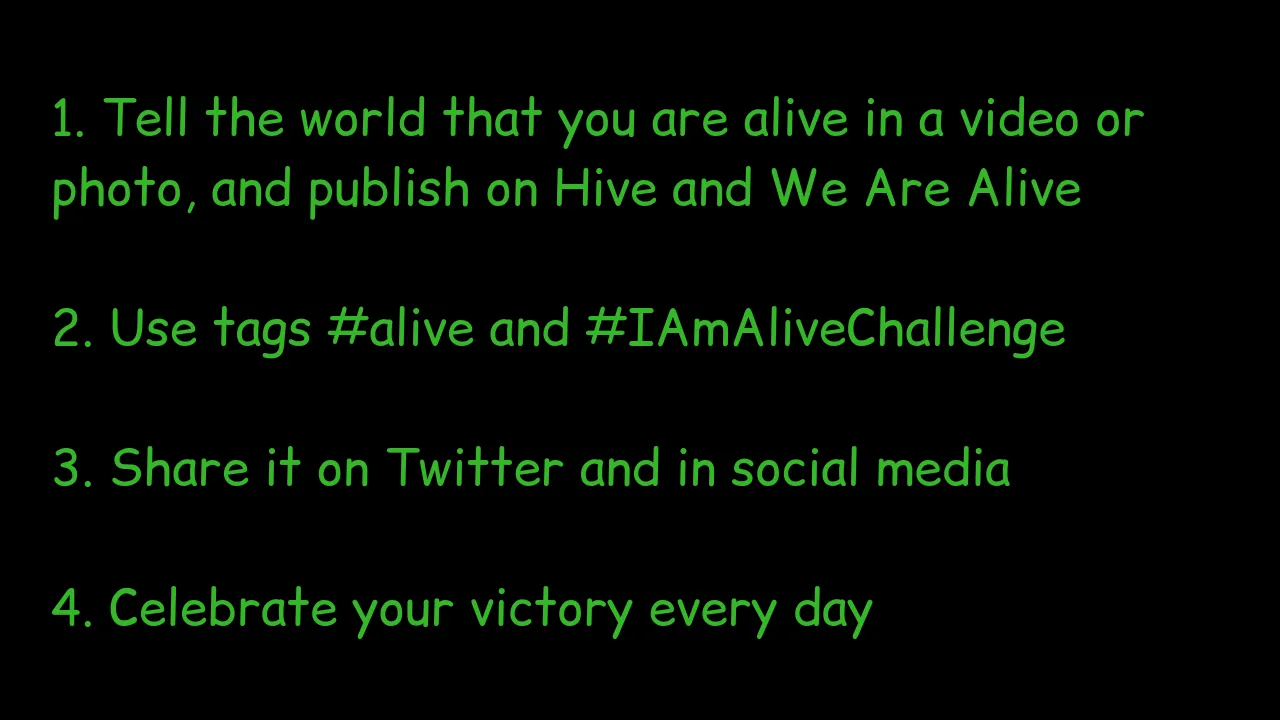
Image's Source - Fuente de la Imagen
Image generated in NightStudio - Imagen generada en NightStudio

Spanish Version Bellow
It's Friday. It's May 24, and it makes me think a little about how time flies. Today I started the last work day of the week by completing a task that came in the mail. I work from home, but I would like this weekend to be quieter than the previous one, and I would like to sleep my full hours at night. At home things are fine, we have already recovered from the discomfort we had days ago.
I don't know much about what's going on around me, but it seems like everything is relatively calm on this side of the world, I like that. Since I don't have more to share about my offline life, I want to comment on a #History Anniversary for today, which has to do with #food, and this time it's a dish that I don't remember ever eating.
Today is Escargot Day.
I don't know much about what's going on around me, but it seems like everything is relatively calm on this side of the world, I like that. Since I don't have more to share about my offline life, I want to comment on a #History Anniversary for today, which has to do with #food, and this time it's a dish that I don't remember ever eating.
Today is Escargot Day.

Image's Source - Fuente de la Imagen
If the word doesn't sound familiar to you, I'm going to clarify that #Escargot is a French word, to designate the dish prepared from snails. Well, I've eaten a lot of things, but I don't remember eating snails. However, it turns out that the consumption of snails is quite ancient, with reference to this being found in the old Roman Empire. In addition, there are archaeological remains that suggest that snail farming was already present in prehistoric European communities.
Today I learned that the term for this kind of breeding activity is heliciculture. From what I read, snail meat can be quite delicate, low in fat, and a good source of relatively cheap and accessible animal protein. At least that seems to have been what motivated ancestral populations to raise them in their settlements.
Today I learned that the term for this kind of breeding activity is heliciculture. From what I read, snail meat can be quite delicate, low in fat, and a good source of relatively cheap and accessible animal protein. At least that seems to have been what motivated ancestral populations to raise them in their settlements.

Image's Source - Fuente de la Imagen
In much more recent times, reaching the time of the European Renaissance, the use of snails in cooking began to be closely linked to the cuisine of the Gallic territory. Perhaps it is here that we have the most developed recipes for the use of this small animal.
While searching for information, I found a fragment of text that gives, very briefly, a recipe for the preparation of Escargots that seems very simple:
While searching for information, I found a fragment of text that gives, very briefly, a recipe for the preparation of Escargots that seems very simple:
“Cooking snails is a delicate process that produces a tender and aromatic character. To prepare the snails, wash and clean the florets to remove impurities. After cleaning them, cook the flowers in a broth of white wine, onion, garlic and herbs until soft for about an hour. After washing, remove the peels and let them cool. For a classic French recipe, fill each ramekin with a mixture of softened butter, minced garlic, chopped parsley, and a pinch of salt. Place the filled shells in a baking dish and bake in a preheated 375°F (190°C) oven for 10 to 12 minutes or until the oil is bubbling and golden. Serve immediately with crusty bread to soak up the garlic butter.”Text Source (original in Spanish): https://www.naturahoy.com/2024/05/dia-nacional-de-los-caracoles-como-cocinar-caracoles-escargots-a-la-bourguignonne-y-otros- dishes-to-celebrate-the-day/

Image's Source - Fuente de la Imagen
As for the way to eat it, I read that the dish is served with tongs and a thin fork, which is special for #snails. The tongs are used to hold the shell and the fork is inserted into the opening of the shell, the fork is rotated so that the meat comes off, the meat is extracted, and it is eaten.
I have no idea about the flavor, but the recipe with butter, garlic and parsley made me hungry. In my context, I don't have a sale of snails on hand, I read that in some nearby places I could buy them already canned. But reviews tell me that the taste of canned (and industrially processed) Escargots can't compete with those made fresh. I guess I won't find out for a while.
Well, I say goodbye, wishing you that you are well and that we can read again another time.
I have no idea about the flavor, but the recipe with butter, garlic and parsley made me hungry. In my context, I don't have a sale of snails on hand, I read that in some nearby places I could buy them already canned. But reviews tell me that the taste of canned (and industrially processed) Escargots can't compete with those made fresh. I guess I won't find out for a while.
Well, I say goodbye, wishing you that you are well and that we can read again another time.

Versión en Inglés arriba
Es viernes. Estamos a 24 de mayo, y me pone a pensar un poco como vuela el tiempo. Hoy comencé el último día laboral de la semana completando una tarea que me llegó por correo. Trabajo desde casa, pero me gustaría que este fin de semana sea más tranquilo que el anterior, y dormir mis horas completas en la noche. En casa las cosas están bien, ya estamos recuperados del malestar que teníamos hace días.
No sé mucho de lo que pasa alrededor, pero parece que todo está en relativa calma por este lado del mundo, eso me gusta. Siendo que no tengo más para compartir de mi vida fuera de línea, quiero pasar a comentar sobre una Efemérides de la #Historia para hoy, que tiene que ver con #comida, y esta vez es un platillo que no recuerdo haber comido nunca.
Hoy es Día del Escargot.
No sé mucho de lo que pasa alrededor, pero parece que todo está en relativa calma por este lado del mundo, eso me gusta. Siendo que no tengo más para compartir de mi vida fuera de línea, quiero pasar a comentar sobre una Efemérides de la #Historia para hoy, que tiene que ver con #comida, y esta vez es un platillo que no recuerdo haber comido nunca.
Hoy es Día del Escargot.

Image's Source - Fuente de la Imagen
Si no te suena la palabra, voy a aclarar que #Escargot es una palabra francesa, para designar el platillo preparado a partir de caracoles. Bien, he comido muchas cosas, pero no recuerdo haber comido caracoles. Sin embargo, resulta que el consumo de caracoles es bastante antiguo, encontrándose referencia a esto en el viejo Imperio Romano. Además de que hay vestigios arqueológicos que hacen pensar que la cría de caracoles ya estaba presente en las comunidades europeas prehistóricas.
Hoy aprendí que el término para esta clase de actividad de cría es helicicultura. Por lo que leí, la carne de los caracoles puede ser bastante delicada, baja en grasas, y una buena fuente de proteína animal relativamente barata y accesible. Por lo menos eso parece que fue lo que motivo a que poblaciones ancestrales les criaran en sus asentamientos.
Hoy aprendí que el término para esta clase de actividad de cría es helicicultura. Por lo que leí, la carne de los caracoles puede ser bastante delicada, baja en grasas, y una buena fuente de proteína animal relativamente barata y accesible. Por lo menos eso parece que fue lo que motivo a que poblaciones ancestrales les criaran en sus asentamientos.

Image's Source - Fuente de la Imagen
En tiempos mucho más recientes, llegando a la época del renacimiento europeo, el uso de los caracoles en la cocina se empezó a vincular bastante con la cocina del territorio Galo. Quizás es acá que tengamos las recetas más desarrolladas para el uso de este pequeño animal.
Mientras buscaba información, hallé un fragmento de texto que da, muy brevemente, una receta para la preparación de Escargots que parece muy sencilla:
Mientras buscaba información, hallé un fragmento de texto que da, muy brevemente, una receta para la preparación de Escargots que parece muy sencilla:
“Cocinar caracoles es un proceso delicado que produce un carácter tierno y aromático. Para preparar los caracoles, lave y limpie los floretes para eliminar las impurezas. Después de limpiarlas, cuece las flores en un caldo de vino blanco, cebolla, ajo y hierbas hasta que estén blandas durante aproximadamente una hora. Después del lavado, retira las cáscaras y déjalas enfriar. Para una receta francesa clásica, llene cada molde con una mezcla de mantequilla blanda, ajo picado, perejil picado y una pizca de sal. Coloque las conchas rellenas en una fuente refractaria y hornee en un horno precalentado a 375 °F (190 °C) durante 10 a 12 minutos o hasta que el aceite burbujee y esté dorado. Sirva inmediatamente con pan crujiente para absorber la mantequilla de ajo.”Fuente del Texto: https://www.naturahoy.com/2024/05/dia-nacional-de-los-caracoles-como-cocinar-caracoles-escargots-a-la-bourguignonne-y-otros-platos-para-celebrar-el-dia/

Image's Source - Fuente de la Imagen
En cuanto a la manera de comerlo, leí que se sirve el plato con unas pinzas y un tenedor delgado, que es especial para los #caracoles. Se usa la pinza para sujetas el caparazón y se introduce el tenedor en la apertura de la concha, se gira el tenedor para que se desprenda la carne, se extrae la carne, y se come.
No tengo idea del sabor, pero la receta con mantequilla, ajo y perejil, me dio apetito. En mi contexto, no tengo a mano una venta de caracoles, leí que en algunos sitios cercanos podría comprarlos ya enlatados. Pero las críticas me dicen que el sabor de los Escargots enlatados (y procesados industrialmente) no pueden competir con los hechos de manera fresca. Supongo que no lo averiguaré por un buen tiempo.
Bien, ya me despido, deseándote que tú estés bien y nos podamos leer de nuevo en otra oportunidad.
No tengo idea del sabor, pero la receta con mantequilla, ajo y perejil, me dio apetito. En mi contexto, no tengo a mano una venta de caracoles, leí que en algunos sitios cercanos podría comprarlos ya enlatados. Pero las críticas me dicen que el sabor de los Escargots enlatados (y procesados industrialmente) no pueden competir con los hechos de manera fresca. Supongo que no lo averiguaré por un buen tiempo.
Bien, ya me despido, deseándote que tú estés bien y nos podamos leer de nuevo en otra oportunidad.

This post, on the #blockchain #Hive, is in the We Are Alive Tribe community, it's part of the #IAmAliveChallenge
This challenge is an initiative of @flaxz
The 4 points to join the #IAmAliveChallenge, includes using the hashtag #alive to post to We Are Alive Tribe and earn ALIVE tokens.
This challenge is an initiative of @flaxz
The 4 points to join the #IAmAliveChallenge, includes using the hashtag #alive to post to We Are Alive Tribe and earn ALIVE tokens.
Esta publicación, en la #blockchain #Hive, está en la comunidad We Are Alive Tribe, es parte del #IAmAliveChallenge
Este desafío es iniciativa de @flaxz
Los 4 puntos para unirte al #IAmAliveChallenge, incluyen el uso de la etiqueta #alive para publicar en We Are Alive Tribe y ganar tokens ALIVE.
Este desafío es iniciativa de @flaxz
Los 4 puntos para unirte al #IAmAliveChallenge, incluyen el uso de la etiqueta #alive para publicar en We Are Alive Tribe y ganar tokens ALIVE.

